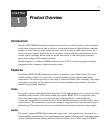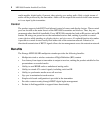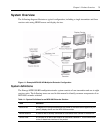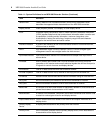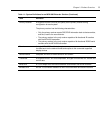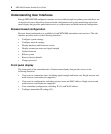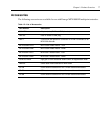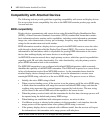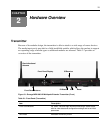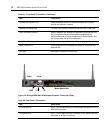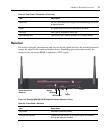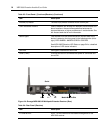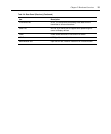
8 MPX1000 Extender Installer/User Guide
Compatibility with Attached Devices
The following sections provide guidelines regarding compatibility with source and display devices.
For an up to date device compatibility list, refer to the MPX1000 extender product page on the
Avocent web site.
EDID compatibility
Display devices communicate with source devices using Extended Display Identification Data
(EDID), a Video Electronics Standards Association (VESA) standard data format that contains
basic information about a monitor and its capabilities, including vendor information, maximum
image size, color characteristics, factory pre-set timings, frequency range limits and character
strings for the monitor name and serial number.
EDID information stored in a display device is passed to the MPX1000 receiver across the video
cable through a digital path called the Display Data Channel (DDC). The receiver forwards this
information to the transmitter, which is responsible for passing EDID information to the source
device, thus enabling display and source devices to work together.
An MPX1000 extension network has a single primary receiver, which has special responsibilities
regarding serial, IR, and video functionality. For video functionality, only the primary receiver
passes EDID information back to the transmitter.
The MPX1000 transmitter is pre-configured with default EDID information, which accurately
identifies the capability of the MPX1000 transmitter. This EDID will be passed to a source device
in lieu of information received from MPX1000 receivers. As the transmitter learns about the
attached display devices through receiver bindings, it uses the information to create a more
meaningful EDID string, referred to as the active EDID string. The process occurs as follows:
• Initially, the active EDID string is blank
• When a receiver binding occurs, if the receiver is not the primary and if the active EDID string
is blank, then the transmitter will merge the received and default EDID strings such that the
resulting string represents the common features supported by both devices. This new string
will be stored as the active EDID and will be reported to the source device.
• When the primary receiver binds with the transmitter for the first time, the merge process will
be repeated using the default and primary EDID strings.
• When bindings are established with subsequent receivers, no action is taken.
• If a different receiver is selected as the primary via the transmitter’s web interface, then the
merge process will be repeated when a new primary EDID string is received.
• If the primary display device is replaced with a different model, then the receiver will report
the information to the transmitter and a merge process will take place.
NOTE: A blank screen will occur as EDID changes are being processed.




